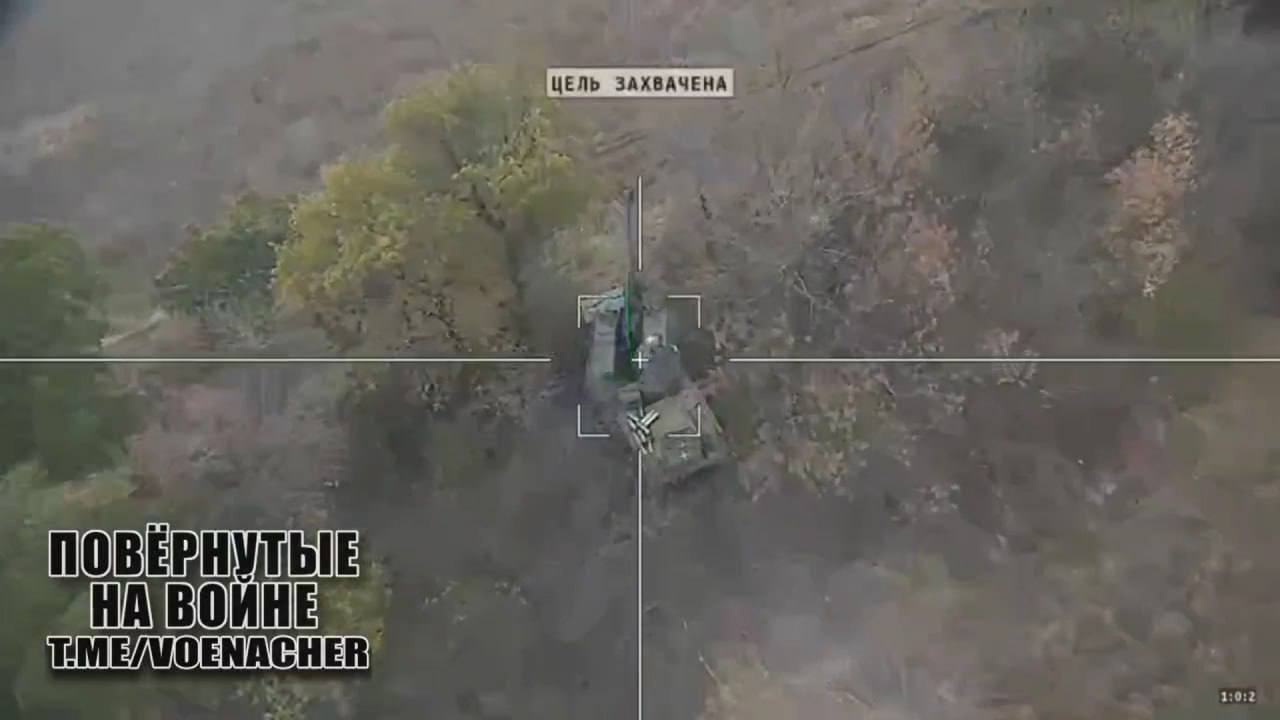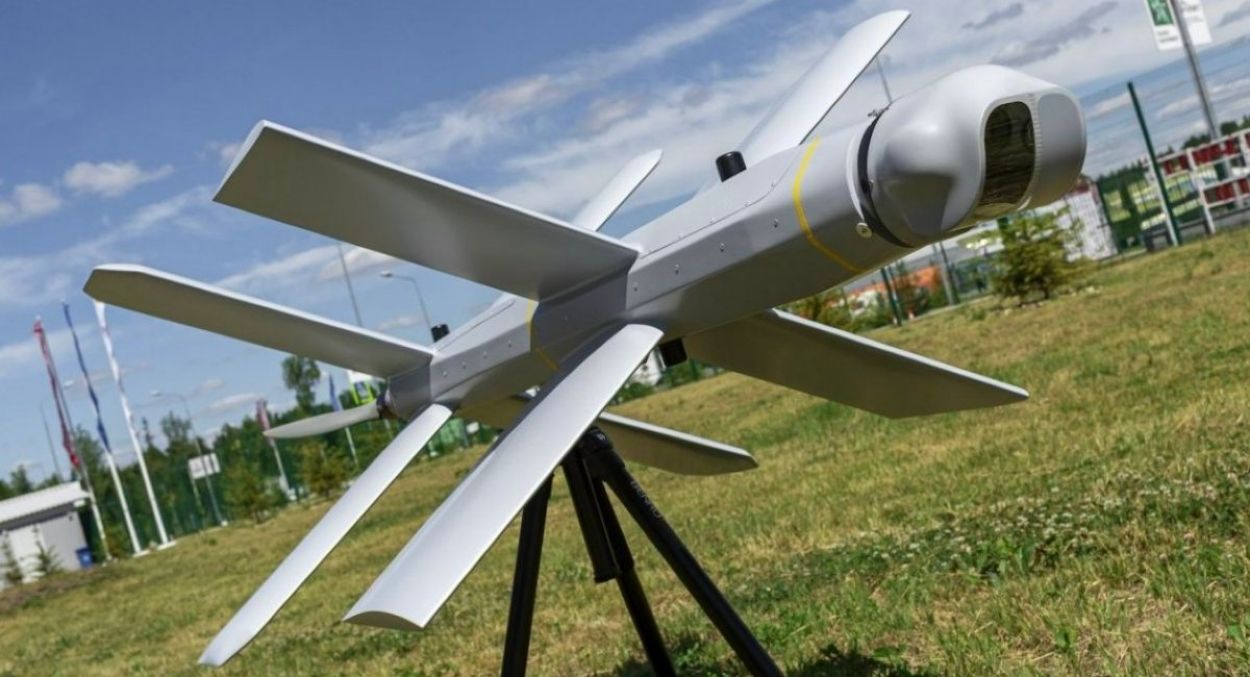After striking parked Ukrainian jets nearly 60 kilometers from the frontline, Russia’s notorious Lancet loitering munition has leveled up. Last week, the UAV destroyed a Czech Republic-made RM-70 tube rocket artillery and a 152-mm DANA self-propelled gun (SPG).
Russian Telegram channels pointed to the video feed from the Lancet’s nose camera while approaching the target. It noted a green box around the targeting reticule with the message ‘target acquired.’ This suggests the Lancet can now operate autonomously, detecting and recognizing targets independently.
If true, the capability marks another milestone in the evolution of the famous loitering munition. It has emerged as the most defining weapon of the war, with several dozen videos showing it destroying Ukraine’s Soviet-origin artillery and European and US howitzers like the M777, Paladin, and self-propelled guns like the Polish KRAB. It has even destroyed several air defense radars and surface-to-air missiles (SAM) like the S-300.
Russia introduced the Lancet series of Unmanned Aerial Vehicles (UAV) following the tactical withdrawal from Kherson in November last year after Ukraine had begun targetting its long and vulnerable supply lines that fed its gun and tube rocket artillery. It destroyed 45 percent of towed and self-propelled artillery since the beginning of the war in February 2022.
MLRS & SPG Identified & Destroyed Automatically
The destruction of the RM-70 Multiple Launch Rocket System (MLRS) is said to have occurred on October 18 near the town of Shcherbinovka, Toretsk district, nine kilometers from the front.
This is well within the 40 km range of the Lancet. The strike on the DANA SPG happens sometime between October 19 and 21. In both instances, especially in the case of the DANA, the drone identified and struck the targets automatically, without human intervention.

According to leading Russian Telegram channel Military Chronicles, “the target recognition technology has been tested before…in combat conditions both on the small Lancet-1 UAVs and (then) on the large Lancet-3 drones.”
This suggests Russian ground forces will now begin the mass use of drones capable of prioritizing targets as was promised by the developer ZALA. “(They) are already operating over the battlefield automatically.”
Disadvantage Ukraine?
For one, both attacks took place in the autumn-winter season. The season might complicate the Armed Forces of Ukraine’s (AFU) task of successfully concealing their ground systems against the color of the foliage in the autumn-winter season.
This further enhances the accuracy of the automatic target identification system, which will not take time to differentiate the target from the surroundings.
Even when the complete winter sets in or there are environments where camouflaging becomes easy, it doesn’t guarantee that automatic target identification systems might work poorly.
This is because the images of many enemy systems are preloaded into the memory bank of such munitions, thus aiding the automatic identification through the silhouette or the broad outline, triggering the attack sequence.
Under such a situation, the AFU might have to pull its artillery out of the range of the Lancets and cede ground to the Russians. This, however, does not necessarily qualify as a dilemma for Ukraine.
Choosing between the risk of losing heavy weapons because they are placed ahead, pulling them back, and allowing an adversary to waltz in without resistance, a military would instead go for the former.
The AFU can find better camouflage, concealment tactics, more optimal placement of artillery systems, and stricter movement and firing discipline. US engineers and technicians on the ground unofficially in Ukraine can always help arrange an elaborate yet surefire way to jam or shoot down a Lancet-3 with minimal core damage and study its weakness.
A dilemma, if any, is between investing time and resources in finding countermeasures to the Lancet’s advanced capabilities and continuing to resist the Russian onslaught. It is not between pulling back heavy weaponry that can still damage Russian ground positions.
But it certainly does offer Russian ground forces tremendous tactical relief since it nearly eliminates the task of pre-attack surveillance, as the crew has now to program and launch the drone from the catapult. With the automatic search and target acquisition functions, the unit can change position immediately and prevent being tracked by Ukrainian electronic warfare (EW).
Which Upgraded Lancet Was Used?
It is, however, not known whether all the Russian units on the frontline have received the upgraded Lancet-3s. In mid-September, a Russian Lancet-3 destroyed a Ukrainian Air Force (UAF) MiG-29 at Dolgintsevo air base near Kryvyi Rih in south-central Ukraine.

Observers noted how the location was nearly sixty kilometers from the frontline, inferring that the Lancet-3 used in the strike had an enhanced range that extended its 40-kilometer range to well above 60 km.
Before that, in March, RIA Novosti reported about ZALA introducing an upgraded version with a “new optical-electronic guidance system and control system with new software and improved controllability (and a) more powerful” warhead. It did not, however, mention an extended range as one of the upgrades.
Another report quoted ZALA Aero officials mentioning an even more advanced variant of the Lancet-3, called the Izdeliye 53 (Product 53). “It can be remotely fired from a Multiple-Launch System, such as a quad-packed 4×4 launcher, and capable of communicating with other drones, enabling a coordinated ‘drone swarm’ attack.”
This implies that the Lancet-3 that hit the Czech artillery systems is from this batch that RIA Novosti reports since the upgrades mentioned come closest to the automatic target identification capability claimed by the Military Chronicles Telegram channel.
The Lancet-3 that hit the MiG-29 could be from another batch with the extended range as an upgrade. This is, however, unclear and is a mere conjecture based on available information. More clarity can be expected upon further reportage from Russian media about the Lancet upgrade and serial production program.
- The author can be reached at satamp@gmail.com
- Follow EurAsian Times on Google News




